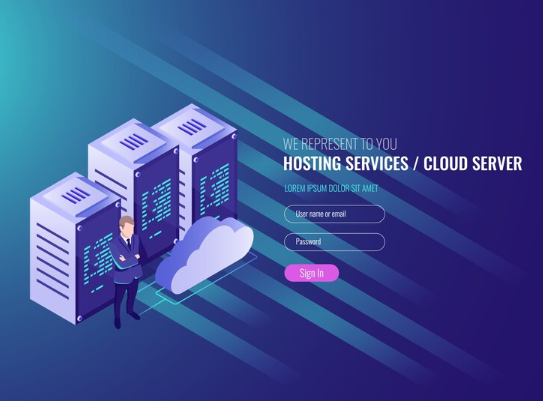Cloud and Hosting Services
Cloud computing has revolutionized the way businesses operate in the digital age, offering unprecedented flexibility, scalability, and efficiency. Understanding the intricacies of cloud computing is essential for businesses aiming to leverage its benefits effectively.
Understanding Cloud Computing
Definition and Concept
Cloud computing refers to the delivery of computing services—such as servers, storage, databases, networking, software, and analytics—over the internet (“the cloud”) to offer faster innovation, flexible resources, and economies of scale.
Evolution of Cloud Computing
From its inception in the 1960s with the concept of utility computing to its mainstream adoption in the early 2000s, cloud computing has evolved significantly. It has transitioned from basic storage and processing to encompass advanced services like AI and IoT.
Benefits of Cloud Computing
Cloud computing offers myriad benefits, including cost-efficiency, scalability, agility, and accessibility. Businesses can streamline operations, reduce capital expenditure, and access cutting-edge technologies without heavy upfront investments.
Types of Cloud Services
Infrastructure as a Service (IaaS)
IaaS provides virtualized computing resources over the internet, including servers, storage, and networking hardware, allowing users to build and manage their IT infrastructure remotely.
Advantages
The flexibility to scale resources up or down based on demand, reduced operational costs, and the elimination of hardware maintenance burdens are key advantages of IaaS.
Examples
Popular IaaS providers include Amazon Web Services (AWS), Microsoft Azure, and Google Cloud Platform (GCP).
Platform as a Service (PaaS)
Overview
PaaS offers a platform allowing developers to build, deploy, and manage applications without worrying about underlying infrastructure complexities.
Advantages
PaaS accelerates application development, improves collaboration among development teams, and provides built-in scalability and security features.
Examples
Leading PaaS providers include Heroku, Google App Engine, and Microsoft Azure App Service.
Software as a Service (SaaS)
Overview
SaaS delivers software applications over the internet on a subscription basis, eliminating the need for users to install, maintain, and update software locally.
Advantages
SaaS offers cost-effective access to a wide range of applications, automatic updates, and scalability to accommodate growing business needs.
Examples
Common SaaS applications include Salesforce, Microsoft Office 365, and Dropbox.
Key Players in the Cloud Industry
Amazon Web Services (AWS)
As the pioneer of cloud computing, AWS dominates the market with its extensive range of cloud services, including computing power, storage, and databases.
Services Offered
AWS provides a comprehensive suite of services, such as Amazon EC2 for virtual servers, Amazon S3 for storage, and Amazon RDS for managed databases.
Market Share
AWS holds a significant market share, serving millions of customers worldwide, ranging from startups to large enterprises.
Microsoft Azure
Overview
Microsoft Azure is a robust cloud platform offering a wide array of services for computing, analytics, storage, and networking.
Services Offered
Azure’s offerings include Azure Virtual Machines, Azure Blob Storage, and Azure SQL Database, catering to diverse business needs.
Market Share
Azure has witnessed rapid growth, positioning itself as a strong competitor to AWS, particularly in enterprise environments.
Google Cloud Platform (GCP)
Overview
GCP provides a reliable and scalable infrastructure for businesses, offering services for computing, storage, machine learning, and data analytics.
Services Offered
GCP’s services include Google Compute Engine, Google Cloud Storage, and Google BigQuery, empowering organizations to innovate and grow.
Market Share
While trailing behind AWS and Azure, GCP continues to gain traction, especially in industries requiring advanced data analytics and machine learning capabilities.
Factors to Consider When Choosing a Cloud Service Provider
Pricing Models
Businesses must evaluate pricing models to align with their usage patterns and budget constraints. Pay-as-you-go models offer flexibility, while subscriptions may provide cost savings for predictable workloads.
Hidden Costs
Careful scrutiny of additional charges for data transfer, storage, and premium support is crucial to avoid unexpected expenses.
Security Measures
Data Encryption
Robust encryption protocols ensure data confidentiality and integrity, safeguarding sensitive information from unauthorized access or cyber threats.
Compliance Certifications
Compliance with industry regulations and certifications, such as GDPR and SOC 2, demonstrates a cloud provider’s commitment to data security and privacy.
Scalability and Flexibility
Resource Allocation
Cloud providers should offer customizable resource allocation options, enabling businesses to scale resources dynamically as per demand fluctuations.
Scaling Options
Support for horizontal and vertical scaling allows businesses to adapt to changing workloads seamlessly, ensuring optimal performance and cost efficiency.
Migration to the Cloud
Planning Your Migration Strategy
A comprehensive assessment of existing infrastructure helps identify dependencies, assess compatibility, and prioritize workloads for migration.
Identifying Workloads
Categorizing workloads based on factors like performance requirements, data sensitivity, and regulatory compliance facilitates a smooth migration process.
Execution of Migration
Lift and Shift vs. Re-architecting
Deciding between lift-and-shift and re-architecting approaches depends on factors such as time constraints, application complexity, and desired outcomes.
Testing and Optimization
Thorough testing and performance optimization post-migration ensure minimal disruption and maximize the benefits of cloud adoption.
Post-Migration Management
Monitoring Performance
Continuous monitoring of application performance, resource utilization, and cost metrics enables proactive management and optimization.
Cost Optimization Strategies
Implementing cost optimization strategies, such as rightsizing instances and leveraging reserved capacity, helps optimize cloud spending and maximize ROI.
Edge Computing
Definition and Importance
Edge computing brings computing resources closer to the data source, reducing latency and enabling real-time processing for applications requiring low latency and high throughput.
Use Cases
Edge computing finds applications in IoT, autonomous vehicles, and edge AI, enabling distributed processing and decision-making at the network edge.
Hybrid Cloud Adoption
Benefits and Challenges
A hybrid cloud combines the scalability of the public cloud with the control of on-premises infrastructure, offering flexibility and data sovereignty benefits. However, managing hybrid environments poses integration and security challenges.
Implementation Best Practices
Effective governance, seamless integration, and robust security measures are essential for successful hybrid cloud adoption, ensuring interoperability and data consistency across environments.
Artificial Intelligence and Machine Learning in Cloud Services
Integration with Cloud Platforms
Cloud providers integrate AI and ML capabilities into their services, empowering businesses to leverage predictive analytics, natural language processing, and computer vision for insights and automation.
Industry Applications
AI and ML revolutionize industries like healthcare, finance, and retail, driving innovation, enhancing decision-making, and delivering personalized experiences to customers.
Conclusion
Cloud and hosting services have become indispensable tools for modern businesses, offering unparalleled flexibility, scalability, and innovation. As businesses embrace digital transformation, the cloud will continue to play a pivotal role in driving efficiency, agility, and growth. With evolving technologies and increasing competition, staying abreast of industry trends and leveraging best practices will be critical for businesses to unlock the full potential of cloud computing.






